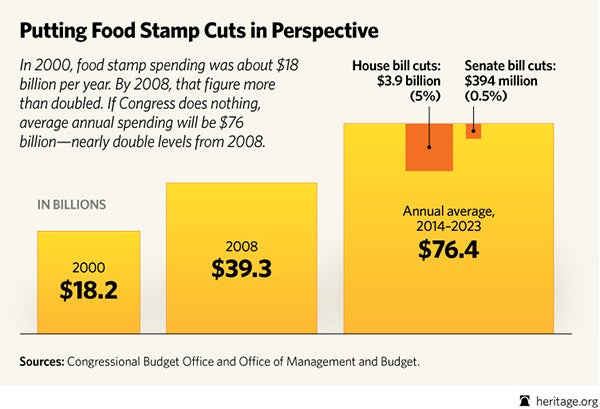Food stamp spending is at historic highs—it has doubled twice since 2000. Now some on Capitol Hill say the House is trying to make major cuts to the program, but they’re really making some much-needed policy reforms that would achieve modest savings.
The House bill proposes a small 5 percent reduction, while the Senate proposes a mere one-half of 1 percent. Even if the House’s reforms are accepted, food stamp spending is projected to be nearly double 2008 levels. It is also projected to remain at or near historical highs into the foreseeable future.
The House’s savings come from closing loopholes and ending policies that are currently undermining the integrity of the program. These policies have allowed states to artificially boost food stamp levels and expand the program beyond its intended population. While the House takes steps in the right direction to reform food stamps, the Senate does hardly anything.
Food stamps should be reformed to ensure that the program is serving those it is intended to serve. It should also be reformed to promote self-sufficiency through work, thus helping those who are able by encouraging self-sufficiency.






























